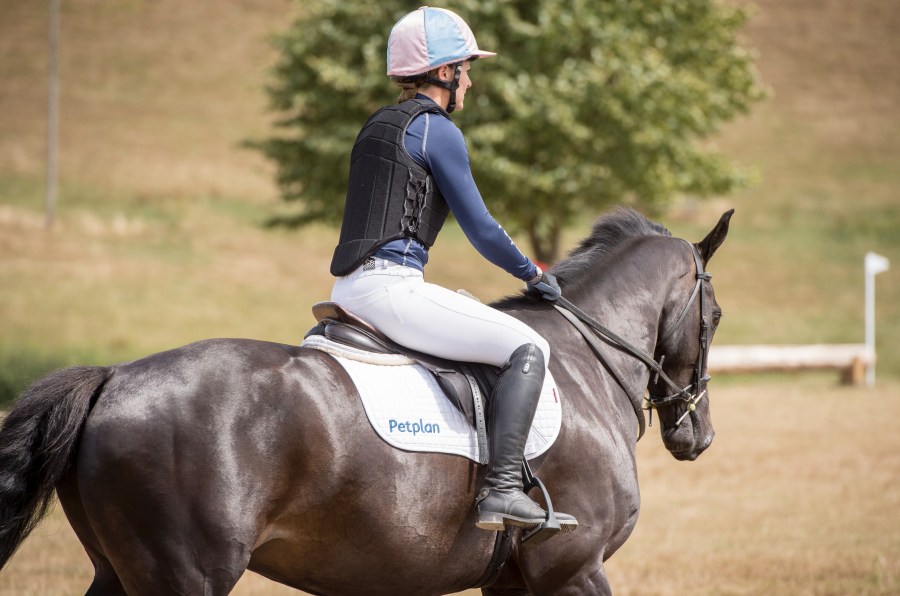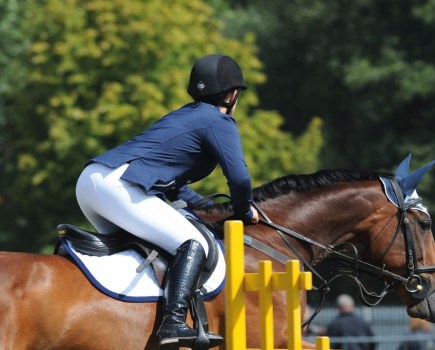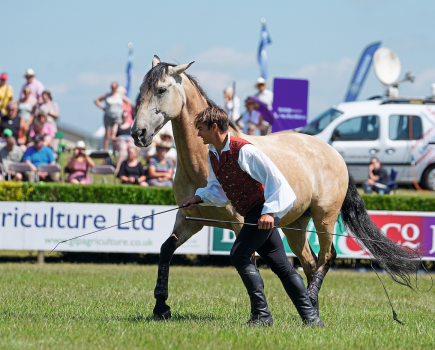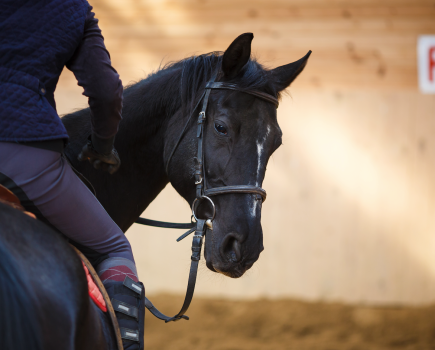The humble neck strap is an often under-appreciated piece of tack, yet can be extremely useful for every rider. Louise Calverley shares eight reasons this innocuous looking piece of kit can be so helpful.
1 Confidence
Coach and rider Stella Bunn describes a neck strap as being “like a seat belt”.
“I use a neck strap on all of my horses when jumping or hacking. No horse is 100% bomb proof so I have a habit of putting one on anyway.
“I can ride an entire dressage test holding on to a neck strap, though you do lose a bit of steering. I have an advanced medium dressage horse who can spin 180° in the blink of an eye, so the strap is there just in case he follows the spin through with something else.”
2 Sense of security
A neck strap is particularly valuable for novice and young riders alike. Steph Lynn is a freelance instructor and likes a neck strap to be part of her own kit, and that of those she teaches.
“I always used a neck strap as a child and you never know when you might need it,” she says.
“I teach a lot of Pony Club members and highly recommend that they ride with a neck strap. It helps to keep hands in the right place, provides something to hold onto to help with a light seat and jumping position.
“It also gives a sense of security that there is something to grab hold of if you feel off balance. I find that a neck strap makes you use more important aids than your hands, too.”
3 Extra balance
In fact every rider, no matter how experienced, can benefit from having a neck strap to grab when they need it. Even Olympic eventer William Fox-Pitt is well known for always using one.
Hannah Jones, a vet who events up to CIC3* level and competes in advanced medium dressage, finds a neck strap particularly useful on 2 Unlimited (‘Leo’).
“When I was breaking him in he was very jumpy. Every time I asked for trot and he felt me move, he either stopped or shot off. I looped my fingers through the neck strap for extra balance and stability. That meant I could be really subtle and careful with starting to rise to the trot,” explains Hannah.
4 Riding youngsters
Neck straps are often associated with young or sharp horses.
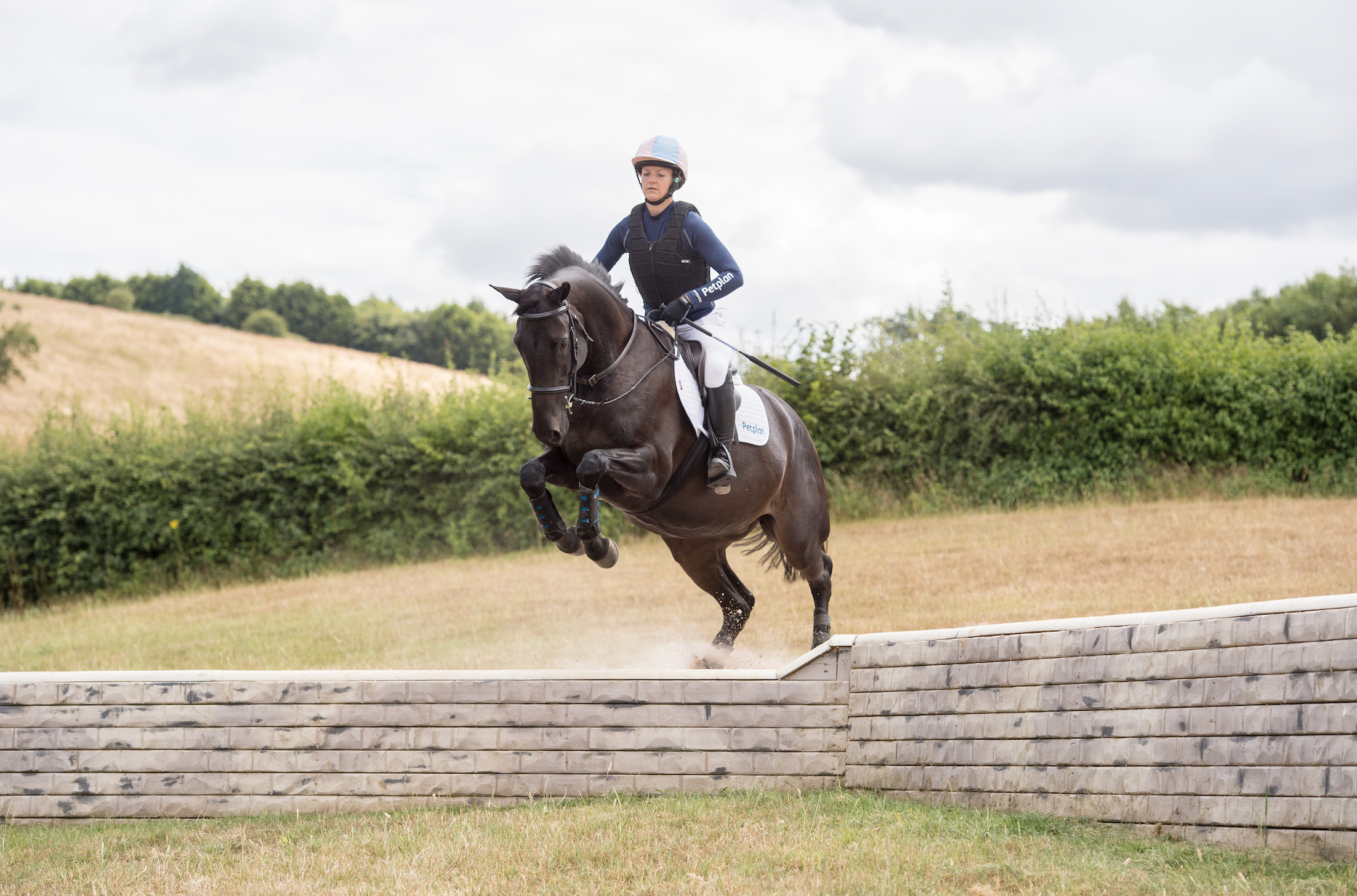
It’s useful to be able to grab a neck strap in the event of a big or awkward jump!
“I have a lot of horses who are just backed or fresh. I always use a neck strap on an unknown horse for extra security,” says Mitty Hardy, who events up to two-star level. “A neck strap means we can leave the horse’s mouth alone, which is so important.”
5 Sitting a big jump
“When horses throw in a big jump or chip in a stride, using a neck strap means you don’t catch them in the mouth and can stay soft in your hand,” adds Mitty.
“Having a neck strap on does become a habit and you almost feel bare without it.
“I have a very powerful big-jumping mare and for anything like cross-country schooling I always put one on, especially for drop fences where I tend to slip my fingers in, loosen the reins and sit back.”
6 Confidence on unknown horses
Whether you’re the one getting on a horse you don’t know, or someone new is coming to ride your horse for the first time, a neck strap is a useful security rein.
“I have a lot of clients coming to ride unknown horses,” adds Mitty. “From my perspective, they are unknown riders, so I tend to pop a neck strap on for clients to try horses. I think just the fact it’s there can boost confidence.”
7 Keeping hands forward
“It’s a great tool if you become unbalanced or if your horse throws an awkward jump as you won’t pull them in the mouth,” says Hannah Jones. “I will also sometimes put a finger through the strap if I’m expecting a big jump, like off a step for the first time.
“Neck straps are also useful for using as a marker to keep your hands pushed forward and in the correct place for flatwork and jumping.”
8 For at home and away
Neck straps aren’t just for use at home. They are permitted in all types of unaffiliated competitions, whereas martingales and breastplates are not always, particularly in dressage. At the higher levels of affiliated competition (FEI), neck straps must be attached to the saddle to prevent them slipping forward to the horse’s head.
“Anyone who works for me or comes to ride out with me uses one and I always recommend them for clients I teach,” says eventer Claire Deuten.
“For competing, I used to use an old stirrup leather, which was known as my ‘lucky strap’, but for the past few years I’ve been using purposely-designed ones. They are a bit thinner and can also be personalised, so I have a pink one with my name on it.”
In the market for a neck strap? Check out our fitting guide and selection of those available on the market here.
Find out what’s inside the latest issue of Your Horse
Check out our latest subscription offer

